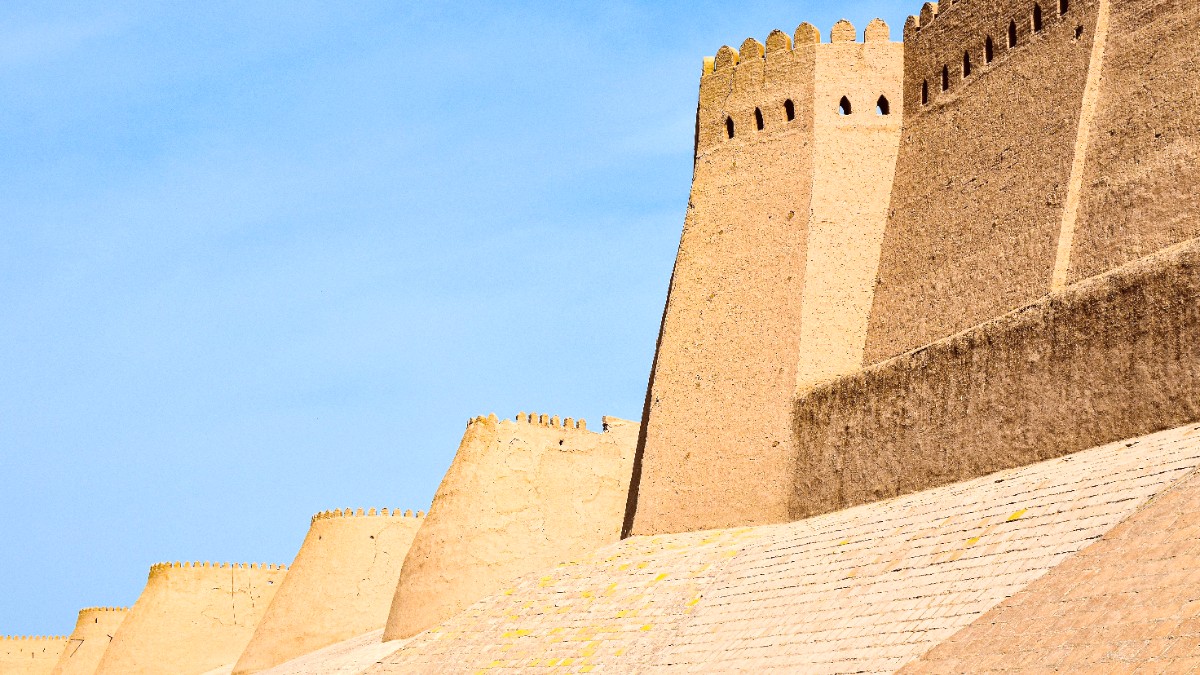
Khorezm, Uzbekistan
Khiva sits in Uzbekistan's Khorezm Region, located in the lower reaches of the Amu Darya river. This placement near the Turkmenistan border creates a distinct regional identity. The city lies at the northern edge of the Karakum Desert, a vast expanse that influenced its existence for centuries. Its desert surroundings meant Khiva relied on the Amu Darya for life-giving water, sustaining its existence as a thriving oasis. This location also positioned Khiva as a central stop for traders traversing the challenging desert routes of the Silk Road. The city's relative isolation, surrounded by arid landscapes, contributed to preserving its architectural integrity. It formed a self-contained world for centuries.
Khiva's proximity to Urgench, the regional capital, also establishes a practical link for travelers. Urgench serves as the main modern gateway, hosting the nearest airport and presenting more contemporary services. The short distance between the two cities facilitates straightforward travel between them, often with a quick taxi ride.
This geographical relationship indicates visitors arrive in Urgench and then make a short journey to the historical heart of Khiva. The location on the Amu Darya's former delta, now largely irrigated land, contrasts with the surrounding desert. This contrast permitted agriculture to flourish, sustaining the city's population through centuries of trade and rule. The flat terrain of the region eases navigation within the city's immediate surroundings. However, the desert stretches endlessly beyond the cultivated areas. This vast desert background highlights Khiva's character as a historic oasis.
Khiva served as a major Silk Road trading post for over a thousand years. It became a stop for caravans crossing the formidable Karakum Desert. Its strategic location positioned it as a nexus for goods, ideas, and cultures moving between East and West. The city's history traces back to ancient times, with its origins debated but likely linked to the emergence of the Khoresmian Empire.
Following the Mongol invasion in the 13th century, Khiva perdured significant disruption. However, its strategic location contributed to its eventual revival. The city rose to prominence again during the Timurid era, a period of cultural and architectural flourishing across Central Asia. The 16th century marked a new chapter with the rise of the Shaybanid dynasty. This dynasty established the Khiva Khanate, establishing Khiva as its capital in the 17th century. This signaled the beginning of Khiva's Golden Age as an independent khanate.
Early history tied to the Khoresmian Empire.
Significant disruption followed by strategic revival.
Renewed trade and scholarly pursuits.
Established in the 17th century, marked a Golden Age.
Incorporation into the Soviet Union in 1920.
It grew into a powerful regional center, known for its madrassas, mosques, and palaces. The Khans of Khiva ruled with a mix of authority and architectural ambition. They commissioned many of the stunning structures that visitors see today.
The Khiva Khanate maintained its independence until 1920. In that year, it fell to the Bolsheviks, resulting in its incorporation into the Soviet Union. This long period of self-rule bequeathed a profound legacy on the city's identity. It formed its unique architectural style and preserved its traditional way of life.
The inner town of Khiva, known as Ichan Kala, is a testament to this history. It gained UNESCO World Heritage Site status. This recognition underscores its exceptional preservation as a historic Silk Road oasis city. Ichan Kala is an unparalleled example of medieval Islamic urban planning.
The city's historical layers, from ancient trade routes to powerful khanates, present a deep narrative for anyone seeking to understand Central Asia's past.
Khiva presents an unique travel experience. It differs from other Silk Road cities like Samarkand or Bukhara due to its compact, self-contained nature. The entire historic inner city, Ichan Kala, feels like one large open-air museum.
Visitors spend their days exploring its numerous madrasahs, mosques, minarets, and palaces. Each structure displays intricate tile work, grand courtyards, and ancient wooden carvings. The city's atmosphere is serene, notably in the early mornings or late evenings when crowds thin. Sunlight plays across the turquoise and blue domes, making for captivating photo opportunities. The city presents a peaceful contrast to the bustling outside world.
Khiva's people often eager to share a cup of tea or a conversation.
The city's layout supports walking and exploration of every alley.
Panoramic views from minarets showcase the clay-colored buildings.
Life within Ichan Kala moves at a slower pace. Artisans work in their shops, selling traditional crafts like wood carvings, ceramics, and textiles. Local eateries serve authentic Uzbek cuisine, with a taste of the region's flavors.
Significant disruption occurred, followed by eventual revival thanks to strategic location.
New chapter began with the rise of this dynasty and the establishment of the Khanate.
The Khanate fell to the Bolsheviks, leading to incorporation into the Soviet Union.
The long period of self-rule formed the city's unique architectural identity.
Traditional ways of life were preserved within its ancient walls.
Ichan Kala's exceptional preservation earned its World Heritage Site status.